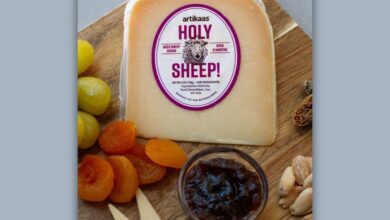Cheese and onion pasties are a classic favorite, known for their savory filling and flaky pastry crust. Whether enjoyed as a snack, lunch, or a party treat, these delicious pastries can bring comfort and joy to any occasion. Achieving flaky perfection in pasties can sometimes feel like an art form. With the right combination of ingredients and techniques, you can elevate your pasties from good to extraordinary. In this article, we’ll explore 10 secret ingredients that will transform your pasties into culinary masterpieces, ensuring each bite is as delightful as the last.
Cheese and Onion Pasties: Quality Cheese Matters
When making cheese and onion pasties, the type of cheese you use can make a significant difference in the flavor and texture. Opt for high-quality cheeses such as sharp cheddar or Gruyère for a richer taste. Cheddar provides a robust flavor that complements the onions beautifully, while Gruyère adds a touch of nutty sophistication. Avoid pre-grated cheese as it often contains anti-caking agents that can affect the melt and texture. Freshly grated cheese ensures a smoother, creamier filling that melts perfectly.
Cheese and Onion Pasties: Fresh Onions for Optimal Flavor
The onions in cheese and onion pasties are just as important as the cheese. Using fresh onions enhances the taste of the filling. Caramelizing the onions before adding them to the cheese helps to develop a deep, sweet flavor that balances the sharpness of the cheese. Slice the onions thinly and cook them slowly in a bit of butter until they turn golden brown. This process intensifies their sweetness and adds a savory depth to your pasties.
Cheese and Onion Pasties: The Right Flour for a Flaky Crust
The flour you choose plays a crucial role in achieving a flaky pastry crust for your cheese and onion pasties. All-purpose flour is commonly used, but for a lighter and flakier texture, consider using pastry flour. Pastry flour has a lower protein content, which helps create a tender and delicate crust. Alternatively, mixing all-purpose flour with a small amount of cornstarch can also achieve a similar effect. This blend reduces gluten development, resulting in a softer, flakier pastry.
Butter vs. Margarine: The Secret to Flaky Pastry
When it comes to creating a flaky pastry for your cheese and onion pasties, butter is the preferred choice over margarine. Butter contains fat that solidifies and creates layers in the dough as it bakes, resulting in a crisp and flaky texture. Margarine, on the other hand, may contain water and other additives that can negatively affect the flakiness. For the best results, use unsalted butter and cut it into the flour until the mixture resembles coarse crumbs before adding any liquid.
Cold Ingredients for Perfect Pastry
Keeping your ingredients cold is essential for achieving a flaky pastry crust. This includes using cold butter, cold water, and even chilling the flour. Cold ingredients help the fat stay solid as you mix and roll out the dough, which is key to creating the desired flaky texture. Avoid overworking the dough, as this can cause the fat to melt and result in a dense pastry. Refrigerate the dough for at least 30 minutes before rolling it out to maintain its flakiness.
Egg Wash for a Golden Finish
An egg wash is a simple yet effective way to enhance the appearance and texture of your cheese and onion pasties. Brush the pasties with a mixture of beaten egg and a splash of water before baking. This not only gives the pasties a beautiful golden-brown color but also helps the pastry develop a crisp and glossy finish. For an extra touch, you can sprinkle some sesame seeds or poppy seeds on top of the egg wash for added texture and flavor.
Seasoning for Depth of Flavor
Seasoning is crucial in elevating the flavor of your cheese and onion pasties. Apart from salt and pepper, consider adding herbs and spices to the filling. Fresh herbs like thyme or chives complement the cheese and onions beautifully. A pinch of paprika or ground mustard can add a subtle depth of flavor that enhances the overall taste. Be sure to taste the filling before assembling the pasties to ensure it is well-seasoned.
Pre-Cooking the Filling
To avoid a soggy pastry and ensure a well-cooked filling, it’s important to pre-cook the cheese and onion mixture. Allow the filling to cool before using it to assemble the pasties. This helps the flavors meld together and prevents excess moisture from being released into the pastry. Cooking the filling also ensures that the cheese melts properly and integrates smoothly with the onions, creating a cohesive and delicious filling.
Properly Sealing the Pasties
Proper sealing of your pasties is essential to prevent the filling from spilling out during baking. Use a fork or your fingers to press down the edges of the pastry firmly, creating a crimped edge that secures the filling inside. Make sure there are no gaps or holes in the pastry. This not only helps keep the filling contained but also gives the pasties a professional appearance.
Baking Temperature and Time
The baking temperature and time are critical for achieving the perfect cheese and onion pasties. Preheat your oven to 375°F (190°C) and bake the pasties for about 25-30 minutes, or until they are golden brown and crispy. Avoid opening the oven door frequently, as this can affect the baking process. For even baking, position the pasties on the center rack of the oven and consider rotating the baking sheet halfway through.
Conclusion
Achieving flaky perfection in cheese and onion pasties involves a combination of high-quality ingredients and careful techniques. By focusing on quality cheese, fresh onions, the right flour, and keeping ingredients cold, you can create pasties that are both delicious and visually appealing. Using an egg wash and seasoning the filling properly further enhances the overall experience. Pre-cooking the filling and ensuring proper sealing are also key to avoiding common pitfalls. With these 10 secret ingredients and tips, your pasties will be a hit every time you bake them.
FAQs
Q1. Can I use different types of cheese for cheese and onion pasties?
Yes, you can use various types of cheese depending on your preference. Sharp cheddar and Gruyère are popular choices, but you can experiment with other cheeses like fontina, mozzarella, or a blend for unique flavors.
Q2. How should I store leftover pastries?
Leftover pastries should be stored in an airtight container. They can be kept at room temperature for up to 2 days. For longer storage, refrigerate them for up to 4 days or freeze them for up to 3 months. Reheat in the oven to restore crispness.
Q3. Can these pastries be made ahead of time?
Yes, you can prepare them in advance. Assemble the pastries and freeze them before baking. When ready to cook, bake them directly from the freezer, adding a few extra minutes to the baking time.
Q4. What can I use as a substitute for butter in the pastry dough?
You can use shortening or margarine as a substitute for butter. However, butter is preferred for its flavor and flakiness. Using a substitute may affect the texture and taste of the finished product.
Q5. How can I ensure a crispy texture for my pastries?
To achieve a crispy texture, preheat your oven and bake the pastries on the center rack. Using cold ingredients and avoiding overworking the dough will help maintain a flaky, crisp crust. Also, be careful not to overload the filling to prevent sogginess.
Also read: Peri Peri Chips: 10 Irresistible Recipes for Spicy Snack Lovers





